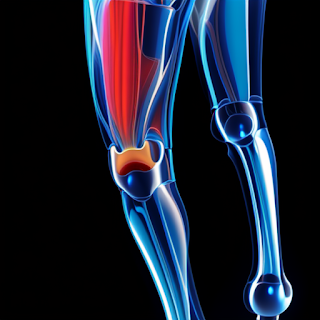Living with Basal Joint Arthritis: A Comprehensive Guide
Introduction:
Basal joint arthritis, also known as thumb arthritis, can significantly impact an individual's daily life. Managing the pain, stiffness, and limitations caused by this condition requires a comprehensive approach. In this article, we will provide a comprehensive guide to living with basal joint arthritis, including strategies for pain management, maintaining functionality, and improving overall quality of life.
1. Understanding Basal Joint Arthritis:
Begin by understanding the nature of basal joint arthritis, its causes, and how it affects the thumb joint. Familiarize yourself with the symptoms and potential triggers to better recognize and manage them.
2. Seek Medical Guidance:
Consult with a healthcare professional experienced in treating hand conditions. They can provide an accurate diagnosis, answer questions, and offer tailored advice based on your specific situation.
3. Pain Management Strategies:
a. Medications: Over-the-counter pain relievers, such as acetaminophen or nonsteroidal anti-inflammatory drugs (NSAIDs), can provide temporary relief. Consult your doctor regarding suitable options and potential side effects.
b. Topical Treatments: Apply topical creams or gels containing ingredients like capsaicin, lidocaine, or menthol to alleviate localized pain and reduce inflammation.
c. Heat and Cold Therapy: Experiment with hot or cold packs to determine which provides the most pain relief. Applying heat can help relax muscles and increase blood flow, while cold therapy can reduce inflammation and numb the area.
4. Protect and Support the Thumb Joint:
a. Splinting: Wearing a thumb splint or brace can provide support, stability, and reduce joint movement, relieving pain and minimizing further damage.
b. Ergonomic Tools: Invest in adaptive tools and utensils designed to reduce stress on the thumb joint, making daily tasks easier and more comfortable.
5. Exercise and Physical Therapy:
a. Range of Motion Exercises: Perform gentle exercises to maintain or increase thumb joint mobility. Consult a physical therapist for guidance on appropriate exercises and techniques.
b. Strengthening Exercises: Strengthening the muscles surrounding the thumb joint can improve stability and support. Your physical therapist can recommend specific exercises tailored to your needs.
6. Lifestyle Adjustments:
a. Modify Activities: Adapt daily activities to reduce stress on the thumb joint. For example, using larger and softer grips on pens or tools can alleviate strain.
b. Pacing and Rest: Listen to your body and take breaks when needed. Pace yourself to avoid overexertion, which can worsen symptoms.
c. Weight Management: Maintaining a healthy weight can reduce stress on the thumb joint and decrease symptoms.
7. Seek Emotional Support:
Living with chronic pain can take a toll on mental well-being. Consider joining support groups or seeking counseling to cope with the emotional aspects of living with basal joint arthritis.
8. Explore Alternative Therapies:
Complementary therapies, such as acupuncture, massage, or transcutaneous electrical nerve stimulation (TENS), may provide relief for some individuals. Discuss these options with your healthcare professional.
9. Surgical Options:
In severe cases where conservative treatments fail, surgical intervention may be considered. Consult with a hand surgeon to discuss the benefits, risks, and potential outcomes of surgical procedures.
Conclusion:
Living with basal joint arthritis can be challenging, but with the right strategies and support, it is possible to manage pain, maintain functionality, and improve overall quality of life. By implementing a comprehensive approach that includes pain management techniques, protective measures, physical therapy, and lifestyle adjustments, individuals with basal joint arthritis can find relief and continue to engage in daily activities with minimal disruption. Remember, each person's experience is unique, so it's essential to work closely with healthcare professionals to develop a personalized plan for managing this condition effectively.


Comments
Post a Comment